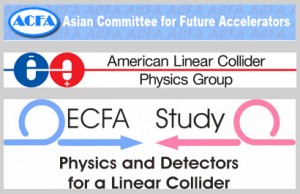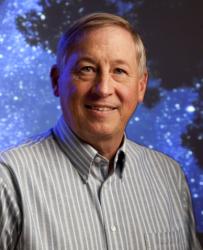As we prepare for another linear collider workshop (the 13th LCWS in the 30-year series) and contemplate the ILC reorganisation and next steps following the Technical Design Report and the Detailed Baseline Design Report, I have recently found myself thinking back on the history of the Worldwide Study (WWS) and the valuable role it has played. The ILC Research Directorate assumed many of the principal roles that were carried out for so many years by the WWS and its organising committee. Does the WWS still have a place? If so, what is it?
The WWS was formally launched in 1998 at the International Conference on High Energy Physics in Vancouver, Canada. The first co-chairs were Charles Baltay (Yale), Sachio Komamiya (Tokyo) and David Miller (University College London), and a regionally balanced membership with five members each from Asia, Europe, and North America joined the co-chairs on the organising committee. At that time, the LCWS series of workshops had already met in Saariselka, Finland (1991), Hawaii, US (1993) and Morioka, Japan (1995); it became the responsibility of the WWS to organise the future meetings of this series. Studies were active in three regions of the world, and the WWS became the principal mechanism to coordinate these studies. The roles for the WWS were then identified to be:
- Maintaining contact between the studies in the three regions;
- Encouraging growth of a worldwide user community, ready to participate in a linear collider programme – wherever a machine is built;
- Representing that community to the International Committee for Future Accelerators (ICFA); and
- Acting as a programme committee for the LCWS series.
The WWS organising committee would lead this effort, with interest in any future linear collider. The high-energy physics laboratory directors encouraged this new organisation.
In order to advance the detector R&D for the linear collider, in 2001 the WWS created an R&D review panel to survey efforts (projects and collaborations), assess the goals and level of support, and to identify gaps. A panel of three from each region was established and a report was written in 2002. This report helped spur the efforts and generate support. The report also took note of the difficult situation with regard to test beam facilities worldwide, and motivated increased support for facilities to meet this need in the ensuing years.
In 2002, ICFA established the International Linear Collider Steering Committee (ILCSC). The ILCSC invited the WWS to serve as the physics and detector subcommittee of the ILCSC, charging it to begin assembling a high-level parameter list to guide the efforts of the accelerator scientists and engineers. In response to the ILCSC charge, the WWS enlisted a scope and parameters panel to prepare a document. It was delivered in 2003, and guided the early design of the linear collider. The document was updated in 2006 for the GDE and continues to define the physics requirements for the ILC.
At about this time the WWS also prepared what came to be known as the consensus document: “Understanding Matter, Energy, Space, and Time: The Case for the Linear Collider,” signed by 2724 scientists and engineers, many of whom were not directly involved. The signatories had been convinced of the importance of the linear collider. The document presented the scientific case for a 500-gigaelectronvolt electron-positron linear collider, upgradeable to higher energy, with options for future investigations using alternate beam particles and enhanced beam polarisation.
The ILCSC/ICFA invited the WWS in 2004 to consider how experimental detector concepts could be developed while encouraging sub-detector R&D and promoting machine-detector interface studies. Members of the WWS organising committee held a diversity of opinions on how to proceed in responding to this invitation, creating a healthy, innovative effort to organise the path forward. This roadmap discussion became an intense topic of conversation and debate within the broader WWS as issues of detector collaborations and detector down-selection were considered.
To consider the efforts and advise on future directions, in 2005 the focus of the WWS on the detector R&D efforts was intensified with the establishment of a second R&D panel to survey the worldwide activities through a series of review meetings complete with external review panels. The reports of these review panels provided useful expert input to the various regional funding agencies decisions on R&D support.
With the formation of the Global Design Effort (GDE) in 2005, the WWS entered a new era. A vigorous worldwide accelerator R&D effort on the ILC was initiated, and the detector community felt the pressure to keep up. The GDE was planning the Reference Design Report (RDR), and the WWS led preparation for a companion, the Detector Concept Report (DCR), as well as volume 2 of the RDR, Physics at the ILC. The WWS community successfully produced the Physics volume and the DCR as companions to the RDR in 2006. At the same time, a new structure for organising the detector effort in a more formal setting was envisioned for the ILC. During this time, despite the increased focus on the ILC, the WWS organising committee maintained an interest in the Compact Linear Collider (CLIC) developments with ongoing representation of CERN on the WWS organising committee.
The WWS developed a roadmap for advancing the ILC detector effort in 2006 and 2007. The roadmap was presented to ILCSC and a discussion ensued on how to realise this plan. The concept of an ILC Research Director, advised by an International Detector Advisory Group, was invented. The ILCSC selected a search committee to recruit a Research Director. Sakue Yamada was selected, and during the period of his transition into the new role, he invited the WWS co-chairs (François Richard, Hitoshi Yamamoto, and myself) to join him as regional contacts in his ILC Research Directorate. Initially, in 2007, this was envisioned to be an interim arrangement for one year, as the co-chairs maintained separate responsibilities to the WWS. But, as the arrangement, approved by the ILCSC, has worked to Sakue’s satisfaction and as he has seen no reason to revise it, it has continued and remains as initially formed. When François Richard stepped down as European WWS co-chair last year to be replaced by Juan Fuster Verdu, Sakue invited Juan to also replace François as regional contact in his ILC Research Directorate.
Through these phases and transitions, the WWS has maintained a critical role, contributing to the strength and progress toward realisation of the linear collider through efforts such as those referred to above. It has in particular provided a unifying forum for our common goals with interest in all future linear collider options.
The WWS continues to play an important, complementary role to the ILC project-oriented work of the GDE and the ILC Research Directorate, and I foresee this to be true in the reformulated, future linear collider organisation.




Recent Comments